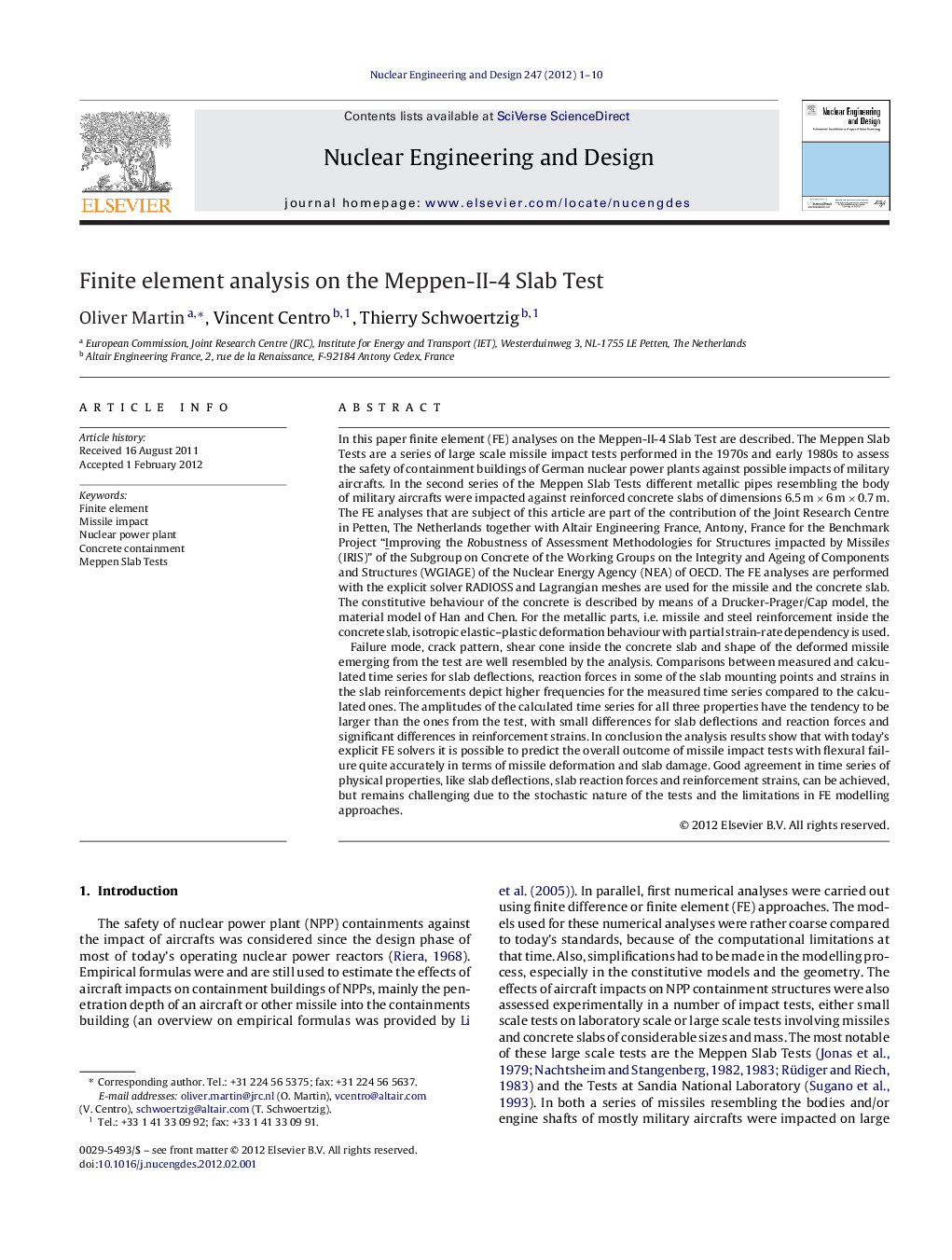| کد مقاله | کد نشریه | سال انتشار | مقاله انگلیسی | نسخه تمام متن |
|---|---|---|---|---|
| 297277 | 511753 | 2012 | 10 صفحه PDF | دانلود رایگان |

In this paper finite element (FE) analyses on the Meppen-II-4 Slab Test are described. The Meppen Slab Tests are a series of large scale missile impact tests performed in the 1970s and early 1980s to assess the safety of containment buildings of German nuclear power plants against possible impacts of military aircrafts. In the second series of the Meppen Slab Tests different metallic pipes resembling the body of military aircrafts were impacted against reinforced concrete slabs of dimensions 6.5 m × 6 m × 0.7 m. The FE analyses that are subject of this article are part of the contribution of the Joint Research Centre in Petten, The Netherlands together with Altair Engineering France, Antony, France for the Benchmark Project “Improving the Robustness of Assessment Methodologies for Structures impacted by Missiles (IRIS)” of the Subgroup on Concrete of the Working Groups on the Integrity and Ageing of Components and Structures (WGIAGE) of the Nuclear Energy Agency (NEA) of OECD. The FE analyses are performed with the explicit solver RADIOSS and Lagrangian meshes are used for the missile and the concrete slab. The constitutive behaviour of the concrete is described by means of a Drucker-Prager/Cap model, the material model of Han and Chen. For the metallic parts, i.e. missile and steel reinforcement inside the concrete slab, isotropic elastic–plastic deformation behaviour with partial strain-rate dependency is used.Failure mode, crack pattern, shear cone inside the concrete slab and shape of the deformed missile emerging from the test are well resembled by the analysis. Comparisons between measured and calculated time series for slab deflections, reaction forces in some of the slab mounting points and strains in the slab reinforcements depict higher frequencies for the measured time series compared to the calculated ones. The amplitudes of the calculated time series for all three properties have the tendency to be larger than the ones from the test, with small differences for slab deflections and reaction forces and significant differences in reinforcement strains. In conclusion the analysis results show that with today's explicit FE solvers it is possible to predict the overall outcome of missile impact tests with flexural failure quite accurately in terms of missile deformation and slab damage. Good agreement in time series of physical properties, like slab deflections, slab reaction forces and reinforcement strains, can be achieved, but remains challenging due to the stochastic nature of the tests and the limitations in FE modelling approaches.
► Use of Lagrangian meshes for missile and concrete slab.
► Use of material model of Han and Chen (Drucker-Prager/Cap model) for concrete.
► Failure mode and crack pattern of slab and missile deformation are well resembled.
► Good agreement in slab deflections, slab reaction forces and reinforcement strains.
Journal: Nuclear Engineering and Design - Volume 247, June 2012, Pages 1–10